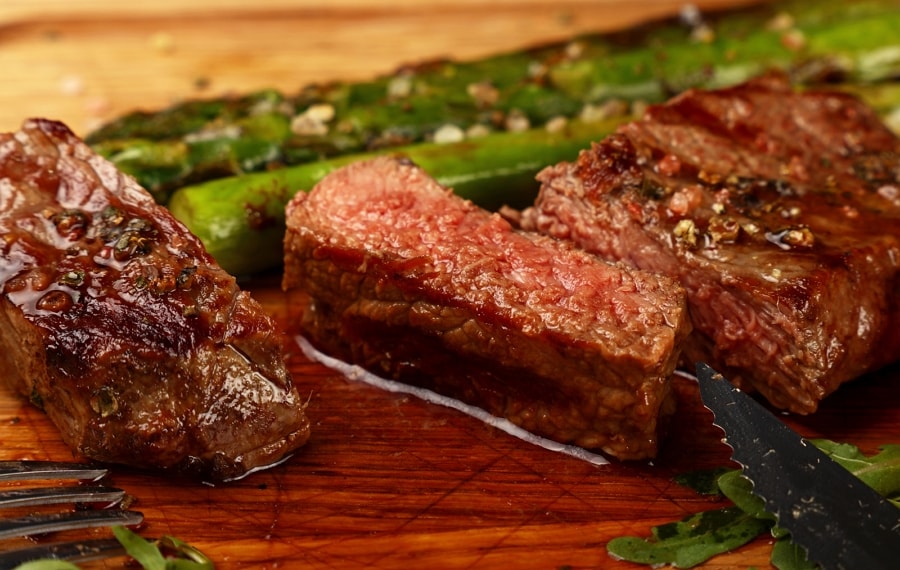What makes a cut of beef tough? What makes it tender? How do you make a tough cut of meat tender and juicy? These are all great questions that I find folks asking quite often.
In general, most home cooks can follow a given recipe to get the results they are looking for when making something like braised short ribs or a pan-seared filet mignon. However, they might lack the understanding of why cooking short ribs low and slow makes them fall off the bone tender or why a filet mignon is naturally tender and becomes dry and rubbery when overcooked.
We hope to address the previously mentioned questions and provide some insight on how to identify tough and tender cuts of protein and how to best prepare them.
For the purposes of this article, we will focus on beef, but keep in mind that this information can be applied to other proteins such as pork, poultry, and lamb as well as other wild game.
It’s All About Motion!
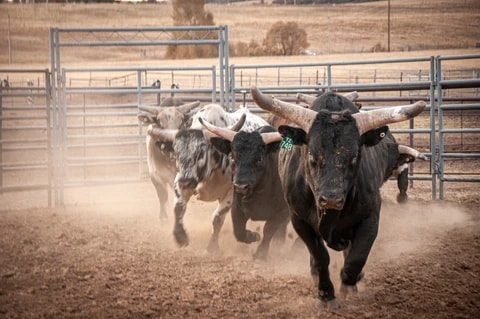
If we look at the almighty cow as an example, we can observe how it moves throughout the day to determine which sections will be tough and which sections will be tender.
A good general rule to follow is muscles that are active and frequently in motion or in use are tough while other muscles that are inactive or not frequently in motion are tender. It is important to note that it is not necessarily the muscle fibers that are tough, but rather it is the collagen and connective tissue that hold the muscle to the bone that creates the muscles’ toughness.
Let’s take a closer look at active and inactive muscles. When it comes to tender inactive muscles, we are primarily referring to the muscles that run along the back of the cow. This includes the Rib, Shortline, Tenderloin, and Sirloin muscles. While these muscles support the spine of the cow, there is not much activity taking place. This reduces the amount of interior sinew and collagen that connects the muscles to the bone.
On the other hand, active muscles like the Chuck, Brisket, Belly, Cheeks, Short Ribs, Round, and Shank are almost in constant motion. For example, cows spend most of their time feeding on fibrous grasses that require a lot of chewing which causes the cheek muscles to develop excess collagen and connective tissue.
A Few Odd Cuts
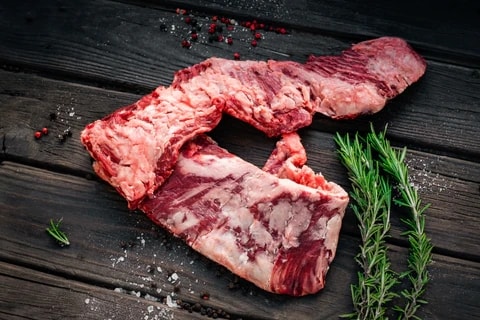
There are always a few exceptions to the rule when it comes to cooking. When it comes to beef there are a few exceptions which include the Tri-Tip, Flank Steak, and Skirt Steak.
All of these muscles are found in the tougher more active segments of the cow but are generally cooked similarly to tender cuts. While they do have a chewiness to them, they provide an intense meaty flavor that is compounded when seared over high heat.
There are several ways of tenderizing each of these cuts which include marinating, physically tenderizing with a Jaccard or kitchen mallet, reverse searing, or sous vide cooking which we will cover later on.
Let’s Get Cooking!
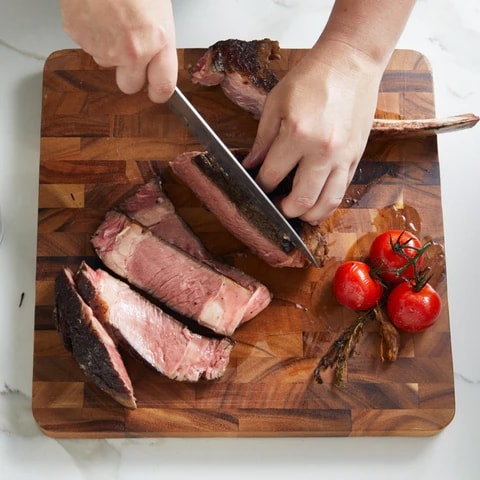
Now that we have a fundamental understanding of what makes a cut of beef tender and tough, we can dive into the best practices as to how to prepare them.
Let’s start off with the more familiar and tender cuts such as the Ribeye or Filet Mignon. Both of these muscles that run along the back of the cow are naturally tender and are best prepared when cooked over high heat for a short amount of time. You might be asking yourself, what about sous vide cooking which cooks low and slow?
In this case, we are not really looking to tenderize the meat but rather insure consistency in temperature throughout the protein. By cooking over high heat, we are intending to kick off the Maillard Reaction (caramelization of proteins) which develops that rich umami flavor that is indicative of a delicious steak.
Using traditional methods like grilling or pan searing, it is up to the cook to ensure that the browning on the outside matches the rate of cooking on the inside. This approach requires experience and a bit of knowledge but can also be worked around by first achieving a nice golden brown sear before reducing the cooking temperature or placing the steak into an oven set at a low temperature. For larger steaks, this process can be done in reverse where the steak is cooked low and slow in an oven or smoker until the desired internal temperature is almost reached before being finished over high heat to create a delicious golden brown sear.
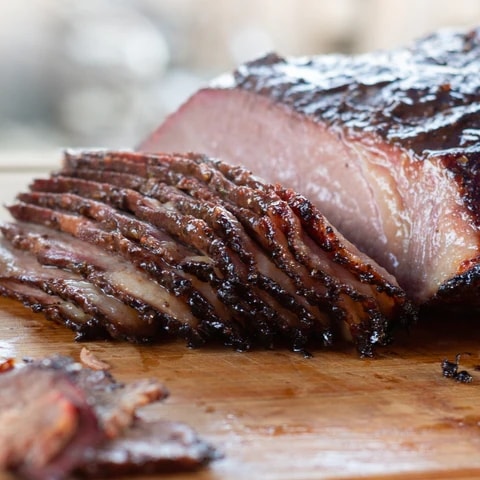
While the more expensive and tender cuts of beef generally get all of the glory, it is the tougher and more time-intensive cuts of beef that I love the most.
Preparing Oxtail, Short Ribs, Beef Cheeks, or the ever daunting Brisket is the tell-tale sign of a skilled cook. The margin of error for preparing tougher cuts of meat is relatively large. If overcooked, the muscle fibers become stringy and dry, while when they are undercooked, they remain tough and chewy. Patience and an understanding of the appropriate internal temperature are required to transform tougher cuts of beef into tender and juicy masterpieces. The goal is to slowly cook the protein until the internal collagen and sinew break down and melt into the meat. This is generally done when the internal temperature reaches between 180° F and 205°F.
Keep in mind that it is not only the internal temperature that matters but also the rate of speed at which we reach this temperature range.
For example, if you took a beef Brisket and threw it over a ripping hot grill, you could reach an internal temperature of 200°F in a matter of minutes.
However, the end result would be a dry and tough brisket. The high heat causes the muscle fibers to contract and squeeze out excess moisture while also preventing the connective tissue and collagen from completely rendering. This is where a healthy dose of patience is required. In order to render the interior fat and break down the connective tissue and collagen which ultimately provides moisture, the rate of cooking needs to be slowed down. Hence the term “Low and Slow”.
Sous Vide Cooking Breaks All of the Rules
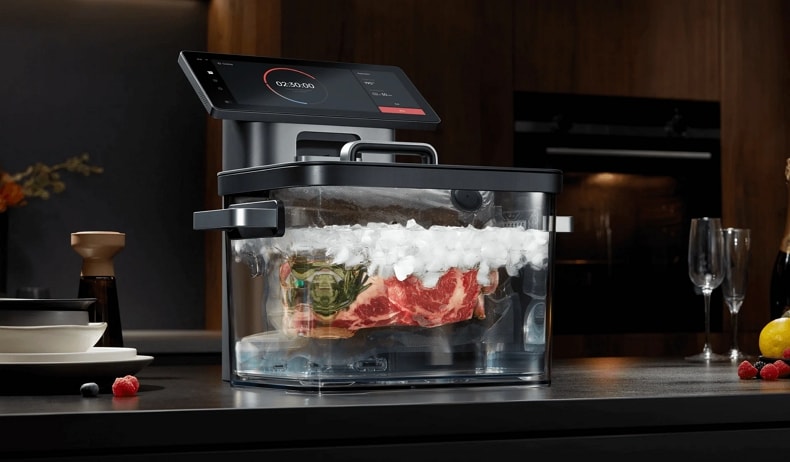
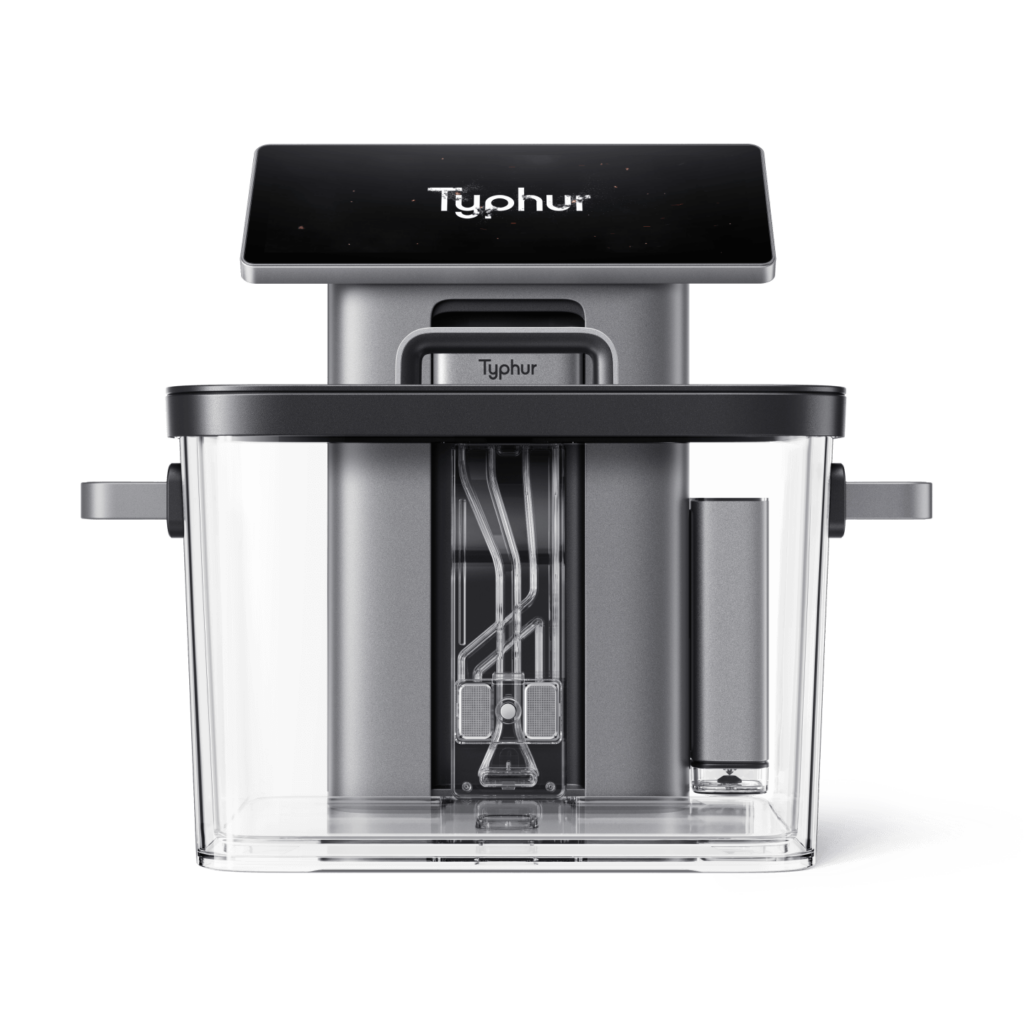
All-in-One Sous Vide Machine
Everything that you have read up to this point follows traditional methods for preparing both tough and tender cuts of protein.
The introduction of Sous Vide cooking bends all of the rules! The precision and ability to cook at extremely low temperatures enables us to prepare an edge-to-edge medium rare ribeye by slowly cooking the steak in a circulated water bath set to a perfect 130°F. If we take short ribs and cook them for 48 hours at 130°F we end up with ultra tender short ribs that have the appearance and texture of a medium rare steak.
Sous vide cooking allows us to drastically reduce the rate of cooking while still breaking down any tough sinew or collagen. As the cooking temperature goes down the length of time for cooking goes up and vice versa. If you are new to sous vide cooking and would like to learn more check out our Complete Guide to Sous Vide Cooking.
New to Sous Vide?
Here at Typhur, we bring you restaurant-grade appliances that make sous-vide cooking easier than ever. The Typhur Sous Vide station has all of your essentials in one place, making it easy to cook like a professional in the comfort of your home.
Every station comes with a handheld vacuum sealer, reusable silicone bags, a double-layered water tank, 1750 watts of power, and a built-in 12.3-inch touch panel with free recipes that update on a regular basis. We make it simple to experiment with new cooking techniques and ace chef-created recipes with precision every time.
If you are interested in learning more about Typhur kitchen appliances and the Sous Vide station, check out more information right here today!

